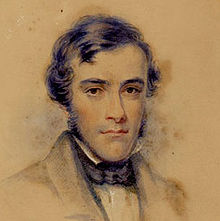Henry Christy
| Henry Christy | |
|---|---|
 |
|
| Born | 26 July 1810 Kingston upon Thames |
| Died | 4 May 1865 (aged 54) |
| Cause of death | inflammation of the lungs |
| Nationality | United Kingdom |
| Occupation | Banker |
| Employer | London Joint-Stock Bank |
| Known for | Enthnographic collection, British Museum |
Henry Christy (26 July 1810 – 4 May 1865) was an English banker and collector, who left his substantial collections to the British Museum.
Christy was born at Kingston upon Thames, the second son of William Miller Christy of Woodbines, a Quaker banker who started out in hat manufacture with interests in , before becoming a financier.
Trained to business by his father, Henry Christy became a partner in the house of Christy & Co. in Gracechurch Street, and succeeded his father as a director of the London Joint-Stock Bank. He was still a board member of the bank at the end of his life, despite other activities. Henry contributed to the success of the family firm, known as W. M. Christy & Sons Ltd. once his father took it over. Samples of textiles he brought home from the Ottoman Empire provided the idea for looped cotton towelling, taken up by his brother Richard, and amenable to mechanical manufacture with a technique devised by an employee. Christy also innovated with woven silk rather than beaver for the manufacture of top hats.
Christy was a philanthropist, active in the Great Famine and other causes. With other Quakers Christy took the approach of buying seeds for other vegetable crops, to reduce the potato monoculture. With committee members Robert Forster and Samuel Fox, he also lobbied the government for practical help in improving Irish fisheries. He was one of the founders of the Aborigines' Protection Society. He was also a committee member of the British and Foreign School Society.
Christy was also involved in numerous learned societies. He belonged to both the Ethnological Society of London and the Anthropological Society of London, representing different strands arising from early ethnology. He became a Fellow of the Linnean Society in 1856, and joined the Geological Society in 1858. He took part in both the archaeological societies of the period, and the Royal Geographical Society. He was also a Fellow of the Society of Antiquaries of London, and sponsored the application for membership there of Augustus Lane Fox (later Pitt Rivers), the other major British collector of the time in the ethnographic field.
...
Wikipedia
